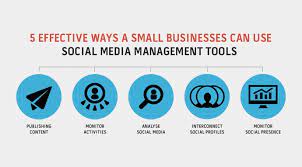E-commerce, or electronic commerce, has revolutionized the way we shop and conduct business. With the rise of the internet and mobile technology, e-commerce has become an essential part of our daily lives.
E-commerce refers to any commercial transaction that takes place online. This can include buying and selling goods and services, as well as digital products like software, music, and movies. E-commerce has made it possible for businesses to reach a global audience and for consumers to access products from anywhere in the world.
One of the biggest advantages of e-commerce is convenience. Online shopping allows consumers to shop from the comfort of their own homes at any time of day or night. This eliminates the need to travel to physical stores, saving time and money. In addition, e-commerce often offers a wider selection of products than traditional brick-and-mortar stores.
Another advantage of e-commerce is cost savings. Online retailers do not have the same overhead costs as physical stores, such as rent and utilities. This allows them to offer lower prices on their products. In addition, many online retailers offer free shipping or discounts on bulk orders.
E-commerce also offers greater opportunities for businesses to reach new customers. With traditional brick-and-mortar stores, businesses are limited by their location. However, with e-commerce, businesses can reach a global audience through their website or online marketplace platforms like Amazon and eBay.
Despite its advantages, e-commerce also presents some challenges. One of the biggest challenges is security. Online transactions require sensitive information like credit card numbers and personal data that can be vulnerable to hackers and cyber attacks.
Another challenge is competition. With so many businesses operating online, it can be difficult for smaller businesses to stand out from larger ones with more resources.
Overall, e-commerce has transformed the way we do business and shop for goods and services. Its convenience, cost savings, and global reach have made it an essential part of our daily lives. As technology continues to advance, e-commerce is likely to become even more prevalent in the future.
6 Essential Tips for Successful E-commerce: From Website Security to Marketing Strategies
- Make sure your website is secure and reliable.
- Ensure that payment options are easy to use and secure.
- Offer various shipping options for customers to choose from.
- Provide clear product descriptions and images to help customers make informed decisions about their purchase.
- Invest in a good customer service system, so you can quickly answer inquiries or resolve any issues customers may have with their orders.
- Utilize marketing strategies such as email campaigns, social media presence, and search engine optimization (SEO) to drive traffic to your website and increase sales opportunities
Make sure your website is secure and reliable.
When it comes to e-commerce, having a secure and reliable website is crucial. Customers want to feel confident that their personal and financial information is safe when making online purchases. A website that is not secure can lead to data breaches and identity theft, which can damage the reputation of the business.
To ensure a secure and reliable website, businesses should invest in SSL (Secure Sockets Layer) certificates. SSL certificates encrypt sensitive information like credit card numbers, making it difficult for hackers to access. In addition, businesses should regularly update their website software and plugins to prevent vulnerabilities that hackers can exploit.
It’s also important for businesses to have a reliable website hosting provider. A reliable hosting provider ensures that the website is available 24/7 with minimal downtime. This ensures that customers can access the website at any time without any issues.
In addition, having a user-friendly website design can also contribute to its reliability. A clear layout with easy navigation can help customers find what they’re looking for quickly and efficiently.
In summary, having a secure and reliable e-commerce website is essential for building customer trust and protecting sensitive information. Businesses should invest in SSL certificates, regularly update their software, choose a reliable hosting provider, and design their websites with user-friendliness in mind. By doing so, businesses can ensure that their e-commerce operations are successful and sustainable in the long run.
Ensure that payment options are easy to use and secure.
When it comes to e-commerce, one of the most important aspects is ensuring that payment options are easy to use and secure. After all, customers need to feel confident that their personal and financial information is safe when making purchases online.
To achieve this, businesses should offer a variety of payment options that are easy to use and understand. This can include credit cards, PayPal, Apple Pay, Google Wallet, or other digital payment methods. The more payment options available, the more likely customers are to find a method they are comfortable with.
In addition to offering multiple payment options, it’s crucial for businesses to ensure that their payment systems are secure. This means using encryption technology to protect customer data and complying with industry standards for security and privacy.
Businesses should also consider partnering with reputable payment processors that have a proven track record of security and reliability. This can help build trust with customers and further enhance the perceived security of the payment process.
Ultimately, ensuring that payment options are easy to use and secure is essential for building customer loyalty and driving sales in the competitive world of e-commerce. By prioritizing security and providing a seamless checkout experience for customers, businesses can set themselves apart from competitors and establish themselves as trusted leaders in their industry.
Offer various shipping options for customers to choose from.
When it comes to e-commerce, offering various shipping options is a crucial tip to keep in mind. Customers have different needs and preferences when it comes to shipping, and by providing a range of options, you can cater to their individual needs and increase customer satisfaction.
One of the most common shipping options is standard shipping, which is typically the most affordable option. This option usually takes longer to arrive but is ideal for customers who are not in a rush to receive their order.
Another popular option is expedited or express shipping, which delivers the order faster but at a higher cost. This option is great for customers who need their order quickly or have time-sensitive items.
Free shipping is another popular option that many customers look for when shopping online. Offering free shipping can be an effective way to attract customers and increase sales.
In addition to these standard options, you can also offer other choices such as same-day delivery or pick-up in-store. These options are ideal for customers who need their orders urgently or prefer the convenience of picking up their orders themselves.
By offering various shipping options, you can provide your customers with flexibility and convenience while also increasing customer loyalty and satisfaction. It’s important to communicate these options clearly on your website so that customers can make informed decisions about how they want their orders delivered.
Provide clear product descriptions and images to help customers make informed decisions about their purchase.
When it comes to e-commerce, providing clear and detailed product descriptions along with high-quality images is essential to help customers make informed decisions about their purchase. In the online world, customers cannot physically touch or examine a product before making a purchase, which makes it even more important to provide them with all the necessary information they need.
Clear and detailed product descriptions should include information such as the product’s size, weight, color options, materials used in its construction, and any other relevant specifications. It’s also important to highlight any unique features or benefits of the product that may set it apart from similar products on the market.
In addition to detailed descriptions, high-quality images are also crucial for e-commerce success. Images should be clear and show different angles of the product so that customers can get a better idea of what they are purchasing. Including videos or 360-degree views can also be helpful in providing customers with an even more immersive experience.
Providing clear product descriptions and images not only helps customers make informed decisions about their purchases but can also increase trust in your brand. When customers feel confident in their purchase decision, they are more likely to become repeat customers and recommend your brand to others.
In conclusion, clear and detailed product descriptions along with high-quality images are essential for e-commerce success. By providing this information upfront, you can help customers make informed decisions about their purchases while building trust in your brand.
Invest in a good customer service system, so you can quickly answer inquiries or resolve any issues customers may have with their orders.
Investing in a good customer service system is crucial for the success of any e-commerce business. With so many options available to consumers, providing excellent customer service can be the difference between a one-time purchase and a loyal customer.
A good customer service system should be able to quickly answer inquiries and resolve any issues that customers may have with their orders. This includes providing clear and concise information about products, shipping times, and return policies. It also means having a dedicated team of customer service representatives who are knowledgeable about the products and services offered by the business.
In addition to resolving issues, a good customer service system should also be proactive in reaching out to customers. This can include sending follow-up emails after purchases or offering personalized recommendations based on previous purchases.
By investing in a good customer service system, e-commerce businesses can build trust with their customers and create a positive reputation for their brand. This can lead to increased sales and repeat business, as well as positive word-of-mouth referrals from satisfied customers.
In today’s competitive e-commerce landscape, providing excellent customer service is no longer an option – it’s a necessity. By prioritizing their customers’ needs and investing in a quality customer service system, businesses can set themselves apart from the competition and thrive in the online marketplace.
Utilize marketing strategies such as email campaigns, social media presence, and search engine optimization (SEO) to drive traffic to your website and increase sales opportunities
In the world of e-commerce, driving traffic to your website is essential for increasing sales opportunities. Utilizing marketing strategies such as email campaigns, social media presence, and search engine optimization (SEO) can help you achieve this goal.
Email campaigns are a great way to reach out to potential customers and keep existing ones engaged. By sending regular newsletters or promotional emails, you can keep your audience informed about new products, sales, and other updates related to your business. This can lead to increased traffic to your website and higher conversion rates.
Social media presence is another effective marketing strategy for e-commerce businesses. By creating profiles on popular social media platforms like Facebook, Instagram, and Twitter, you can connect with potential customers and drive traffic to your website. Social media also provides a platform for engaging with customers and building brand loyalty.
Search engine optimization (SEO) is crucial for ensuring that your website appears at the top of search engine results pages (SERPs). By optimizing your website’s content and structure for relevant keywords and phrases, you can improve its visibility in search results. This can lead to increased traffic from organic search results and higher conversion rates.
In conclusion, utilizing marketing strategies such as email campaigns, social media presence, and SEO is essential for driving traffic to your e-commerce website and increasing sales opportunities. By implementing these strategies effectively, you can establish a strong online presence that attracts new customers and keeps existing ones engaged.


